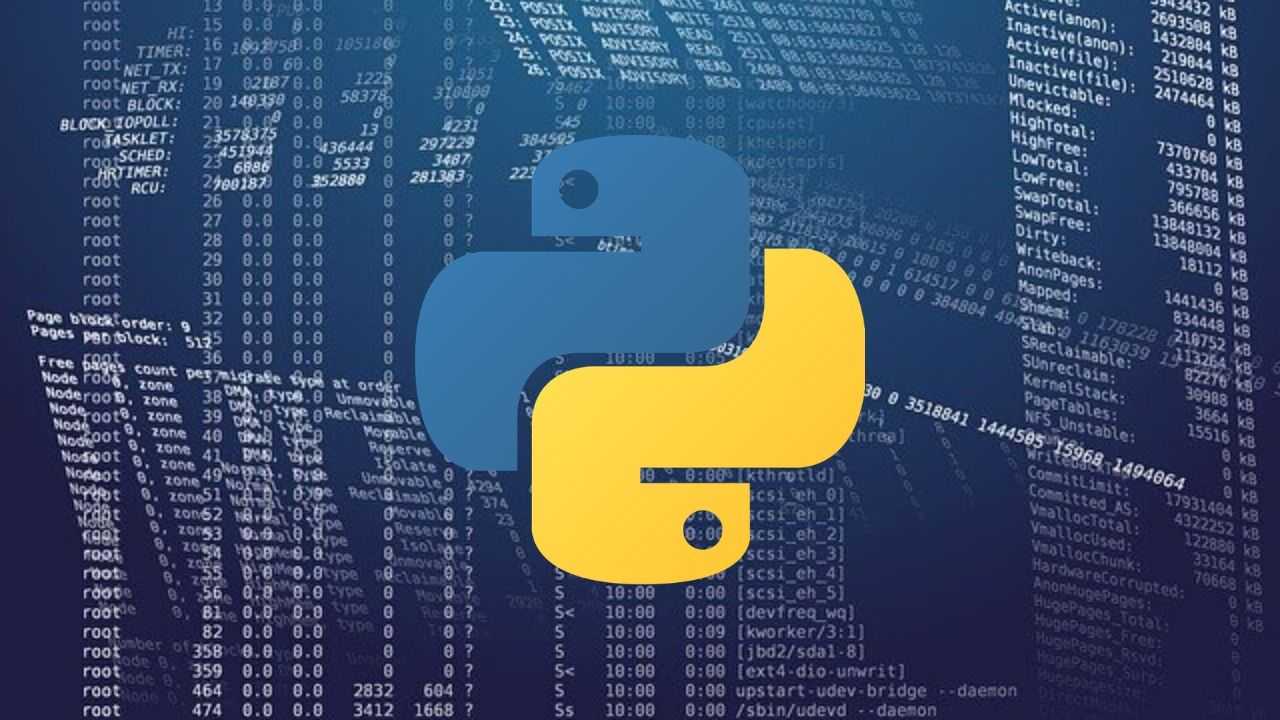Prefect
Master Prefect and learn to orchestrate, schedule, and monitor data workflows with ease—perfect for modern data engineering.Preview Prefect course
Price Match Guarantee Full Lifetime Access Access on any Device Technical Support Secure Checkout Course Completion Certificate 96% Started a new career
BUY THIS COURSE (
96% Started a new career
BUY THIS COURSE (GBP 12 GBP 29 )-
 86% Got a pay increase and promotion
86% Got a pay increase and promotion
Students also bought -
-

- Data Engineering
- 10 Hours
- GBP 12
- 10 Learners
-

- Data Engineering with Talend
- 17 Hours
- GBP 12
- 540 Learners
-

- Python Programming
- 25 Hours
- GBP 12
- 2642 Learners

Prefect is a next-generation dataflow orchestration and automation platform built for the modern data stack. Designed to simplify the creation, scheduling, and monitoring of complex data workflows, Prefect gives data engineers and developers a clean, Python-based interface for managing pipelines efficiently—without the overhead of legacy tools.
This Mastering Prefect – Self-Paced Course by Uplatz helps you build a strong foundation in data orchestration, automation, and observability using Prefect. You’ll learn how to design robust, fault-tolerant data pipelines, integrate them with APIs and cloud platforms, and monitor performance in real time.
Prefect bridges the gap between flexibility and reliability: it allows developers to write orchestration logic directly in Python while providing advanced features such as scheduling, logging, alerts, and retries out of the box. Whether you’re automating ETL jobs, managing data workflows, or monitoring distributed processes, this course will empower you to implement production-grade orchestration systems with ease.
🔍 What is Prefect?
Prefect is an open-source workflow orchestration tool that allows you to build, schedule, and manage data pipelines using Python. It focuses on solving the challenges of automation—making workflows both easy to build and resilient to failure.
Unlike traditional orchestrators such as Apache Airflow, which rely on static DAG definitions, Prefect uses a Pythonic dataflow model. You can define flows (workflows) and tasks (operations) as regular Python functions, adding orchestration features through decorators and configurations.
Prefect offers two major environments:
-
Prefect Orion (Open Source): A next-gen orchestration engine with local and hybrid execution options.
-
Prefect Cloud: A fully managed platform for centralized monitoring, scheduling, and scaling workflows across teams and environments.
With Prefect, developers can build data pipelines that are:
-
Code-driven yet declarative, using Python functions to define workflows.
-
Resilient, thanks to automatic retries, error handling, and state management.
-
Observable, with powerful logging, metrics, and alerts for real-time visibility.
⚙️ How Prefect Works
Prefect operates on a flow-and-task architecture, where a “flow” represents a pipeline and “tasks” represent its building blocks.
-
Tasks: Individual units of work—such as fetching data, transforming it, or uploading to cloud storage.
-
Flows: Compositions of tasks with defined dependencies, order, and conditions.
-
States: Every task or flow can exist in states such as “Running,” “Success,” “Failed,” or “Retrying.”
-
Orchestration Engine: Handles scheduling, triggering, and state transitions automatically.
-
Agents: Lightweight processes that execute flows on local, cloud, or hybrid environments.
You can run Prefect workflows in your local machine, inside Docker containers, or in the cloud. Integration with tools like AWS Lambda, GCP Cloud Run, and Kubernetes makes Prefect highly scalable and adaptable to any data infrastructure.
🏭 How Prefect is Used in the Industry
Prefect has rapidly gained popularity among data engineers, analysts, and DevOps teams looking for a modern orchestration alternative that’s easy to integrate, deploy, and monitor.
Typical use cases include:
-
ETL/ELT Pipelines: Automating data extraction, transformation, and loading from diverse sources.
-
Data Integration Workflows: Managing API calls, file ingestion, and synchronization.
-
Machine Learning Pipelines: Orchestrating model training, validation, and deployment.
-
Reporting and Analytics Jobs: Automating daily, hourly, or event-triggered reports.
-
Event-Driven Automation: Using Prefect’s triggers and schedules for dynamic workflows.
Companies like Databricks, GCP, and Snowflake integrate well with Prefect, making it an essential part of modern data ecosystems. Many enterprises are also migrating from Airflow, Cron, or Luigi to Prefect for its developer-first, fault-tolerant, and flexible orchestration model.
🌟 Benefits of Learning Prefect
By mastering Prefect, you gain the tools and knowledge to design, automate, and monitor data pipelines that can scale effortlessly.
Key benefits include:
-
Python-Native Orchestration: Build workflows using plain Python functions.
-
Cloud-Native Flexibility: Deploy on local, hybrid, or multi-cloud environments.
-
Dynamic Scheduling: Run tasks on a schedule, trigger on events, or parameterize runs.
-
Error Handling & Retries: Automatically handle failures with customizable retry logic.
-
Scalability: Execute workflows in parallel using Dask, Kubernetes, or Prefect Agents.
-
Real-Time Monitoring: Visualize, log, and track task runs in Prefect Orion or Cloud.
-
Integration Ecosystem: Connect to tools like AWS S3, BigQuery, Snowflake, and APIs.
-
Ease of Migration: Prefect’s API is intuitive and backward-compatible with Airflow-like patterns.
Learning Prefect positions you to handle end-to-end data orchestration, from small ETL tasks to large-scale production systems.
📘 What You’ll Learn in This Course
This course takes a hands-on, project-driven approach to mastering Prefect. You’ll learn to:
-
Understand Prefect architecture (flows, tasks, agents, and state management).
-
Define and run tasks and flows using Python.
-
Build data ingestion and ETL pipelines with logging, retries, and caching.
-
Integrate Prefect with APIs, databases, and cloud storage (AWS/GCP/Azure).
-
Use Prefect Orion and Prefect Cloud for scheduling and monitoring.
-
Implement dependencies, triggers, and event-based workflows.
-
Deploy and manage Prefect flows in Docker, Kubernetes, or CI/CD pipelines.
-
Monitor performance, handle alerts, and maintain workflow reliability.
-
Apply best practices for scalability, maintainability, and observability.
By completing this course, you’ll build real-world workflows such as:
-
A data ingestion pipeline with retry logic and structured logging.
-
A cloud-based ETL pipeline integrating databases and APIs.
-
A monitoring workflow that detects and alerts on data anomalies.
🧠 How to Use This Course Effectively
-
Start with Fundamentals: Learn the Prefect core concepts—flows, tasks, and states.
-
Code Along: Write and execute your own flows while following the instructor.
-
Experiment Broadly: Customize provided templates to suit different use cases.
-
Deploy Early: Run your flows on Prefect Cloud or a local agent to understand deployment.
-
Join the Prefect Community: Engage in discussions, share projects, and learn best practices.
-
Document and Iterate: Keep notes on parameterization, retries, and triggers as you refine workflows.
👩💻 Who Should Take This Course
This course is ideal for:
-
Data Engineers automating and orchestrating complex pipelines.
-
Python Developers working with data ingestion, ETL, or APIs.
-
Cloud Architects deploying scalable data workflows.
-
Analytics Engineers seeking a simple yet powerful orchestration framework.
-
Teams Migrating from Airflow, Cron, or custom scripts to modern orchestrators.
-
Students & Professionals exploring real-world data automation tools.
No prior experience with orchestration frameworks is required — basic familiarity with Python and data workflows is sufficient.
🧩 Course Format and Certification
This self-paced course offers a flexible, practical learning experience that includes:
-
HD video tutorials with live coding sessions.
-
Downloadable code templates and sample projects.
-
Real-world mini-projects for hands-on mastery.
-
Quizzes, checkpoints, and self-evaluation modules.
-
Lifetime access with free updates aligned with Prefect releases.
Upon successful completion, you’ll receive a Course Completion Certificate from Uplatz, validating your proficiency in data orchestration with Prefect and demonstrating job-ready data engineering skills.
🚀 Why This Course Stands Out
-
Modern and Relevant: Focuses on Prefect 2.x (Orion) and Cloud.
-
Hands-On Projects: Every lesson is tied to real-world workflows.
-
Industry-Aligned: Designed around data engineering best practices.
-
Python-Focused: Uses native Python code rather than complex DAG syntax.
-
Career-Enhancing: Prepares you for orchestration roles in data, DevOps, and cloud.
By completing this course, you’ll gain practical expertise in building and maintaining resilient, scalable data orchestration pipelines that power analytics and automation in modern enterprises.
🌐 Final Takeaway
As data operations grow in scale and complexity, the need for reliable, automated workflow orchestration becomes critical. Prefect delivers a modern, Pythonic, and flexible way to orchestrate data pipelines—bridging the gap between automation and control.
The Mastering Prefect – Self-Paced Online Course by Uplatz empowers you to design, deploy, and monitor production-grade data workflows confidently. Whether you’re a data engineer building ETL systems, a DevOps specialist managing pipelines, or a developer automating daily jobs, Prefect equips you with the tools and mindset to master modern data orchestration.
Start learning today and bring simplicity, visibility, and power to your data engineering workflows.
Course/Topic 1 - Coming Soon
-
The videos for this course are being recorded freshly and should be available in a few days. Please contact info@uplatz.com to know the exact date of the release of this course.
By the end of this course, you will be able to:
-
Understand the Prefect architecture, including tasks, flows, and state handlers
-
Build robust, fault-tolerant data pipelines with retries and logging
-
Use Prefect CLI, Prefect Orion UI, and Prefect Cloud
-
Schedule workflows using interval, cron, and parameter triggers
-
Deploy and monitor flows in production environments
-
Integrate Prefect with cloud tools like AWS S3, GCS, and Docker
-
Debug workflows using logs, states, and alerts
Course Syllabus
Module 1: Introduction to Prefect
-
Why Workflow Orchestration Matters
-
Overview of Prefect vs Airflow
-
Prefect 2.0 and Orion
Module 2: Getting Started
-
Installing Prefect
-
Writing Your First Flow
-
Understanding Tasks and States
Module 3: Task Management and Retries
-
Parameters and Caching
-
Handling Failures and Retry Policies
-
Logging and Debugging
Module 4: Scheduling Flows
-
Time-based and Cron Scheduling
-
Using the Prefect CLI
-
Parameterizing Flow Runs
Module 5: Working with Prefect Cloud and Orion UI
-
Setting Up Prefect Cloud
-
Monitoring Flows via the Dashboard
-
Alerts and Notifications
Module 6: Integration with External Systems
-
Connecting to AWS, GCP, and Databases
-
Triggering Flows from GitHub or REST APIs
-
Using Docker and Kubernetes Agents
Module 7: Real-World Projects
-
ETL Workflow
-
Data Quality Checker
-
Automated Report Generator
Module 8: Prefect Interview Questions & Answers
-
Common Interview Scenarios
-
Best Practices and Troubleshooting
Upon successful completion of the course, participants receive an industry-recognized Certificate of Completion from Uplatz. This credential validates your skills in Python-based data orchestration, automation, and production monitoring using Prefect, enhancing your profile for roles in data engineering and automation.
Learning Prefect can open doors to roles such as:
-
Data Engineer
-
Workflow Orchestration Engineer
-
Automation Specialist
-
Python Developer (Data)
-
Cloud Data Engineer
With organizations modernizing their data infrastructure, Prefect expertise is in growing demand across industries from finance to healthcare.
-
What is Prefect and how does it compare to Airflow?
Answer: Prefect is a modern workflow orchestration tool designed to manage, schedule, and monitor data workflows. Unlike Airflow, which uses static DAGs, Prefect offers a more dynamic, Python-native approach using imperative code. Prefect 2.0 (Orion) introduces a flexible, DAG-free model, better observability, and improved local development experience. -
How are tasks and flows defined in Prefect?
Answer: Tasks are individual units of work, and flows are collections of tasks with defined execution order. They are defined using Python decorators like@taskand@flow. Prefect uses a Directed Acyclic Graph (DAG) model under the hood but allows defining workflows imperatively. -
What are some common triggers in Prefect scheduling?
Answer: Prefect supports several scheduling triggers including interval-based (e.g., every 10 minutes), cron-style (e.g., at midnight), and manual parameter-based triggers. These can be configured via code or through the Prefect Cloud/Orion UI. -
Explain how retries and logging work in Prefect.
Answer: Prefect allows you to specify retry policies for tasks using theretriesandretry_delay_secondsparameters. Logs are automatically captured for each task and flow run, and can be viewed in the UI or exported for centralized monitoring. -
What is the difference between Prefect Cloud and Orion?
Answer: Prefect Cloud is a managed orchestration environment hosted by Prefect, offering advanced features like team management, cloud storage, and API integration. Orion (now the core of Prefect 2.0) is an open-source orchestration engine that you can run locally or self-hosted. -
How do you manage dependencies between tasks?
Answer: Task dependencies are managed using the order in which tasks are called within the flow. Since Prefect uses Python’s control flow, dependencies are defined naturally through function execution order and data passing. -
Can you deploy a Prefect flow on Docker? How?
Answer: Yes. You can package your Prefect flows in a Docker container by writing a Dockerfile that installs the required dependencies and runs the Prefect agent. The container can be deployed to Kubernetes, ECS, or any container-based environment. -
How would you monitor and debug a failed flow run?
Answer: You can monitor failed runs through the Prefect Orion or Cloud UI. Detailed logs for each task are accessible, and Prefect also provides state tracking and alerting. You can use custom state handlers to trigger notifications or re-runs. -
What are state handlers in Prefect and why are they useful?
Answer: State handlers are functions that run when a task or flow changes state (e.g., from Running to Failed). They’re useful for implementing custom logic such as logging, triggering alerts, or managing retries beyond default behavior. -
Describe a real-world scenario where Prefect adds value over traditional scripting.
Answer: In a scenario where a company runs daily ETL jobs pulling data from APIs and databases, Prefect can provide scheduling, logging, retries, and monitoring—unlike traditional Python scripts which lack built-in observability and fail silently. Prefect ensures these workflows are reliable and maintainable in production.









